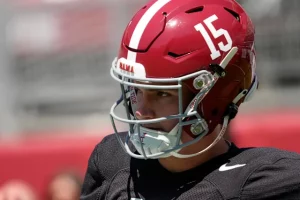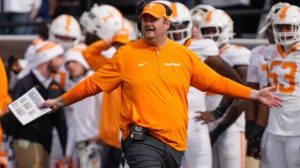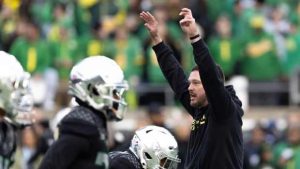In a move that has stunned fans and signaled a potentially dramatic shift in philosophy for the Los Angeles Dodgers, longtime veterans Chris Taylor and Austin Barnes were designated for assignment just a quarter into the 2025 MLB season. Few, if any, would have predicted that two clubhouse leaders with championship pedigrees and deep ties to the team would be shown the door before Memorial Day.
While their on-field struggles were no secret, the timing of the decision reveals just how aggressive and impatient the Dodgers’ front office is becoming in their quest for another World Series title. It’s a message to the clubhouse, the fanbase, and perhaps even the rest of the league: sentimentality will not get in the way of winning.
Before diving into the shock and circumstances surrounding their abrupt exits, it’s important to recognize the contributions Taylor and Barnes have made to the Dodgers’ modern era of success.
Chris Taylor: Mr. Versatility
Chris Taylor will forever be remembered in Dodger lore for his clutch moments and incredible defensive flexibility. Acquired in a relatively quiet trade with the Mariners in 2016, Taylor blossomed into one of baseball’s premier utility players. He played nearly every position on the diamond at one point or another and consistently delivered in the postseason — including his legendary three-homer performance in the 2021 NLCS against the Braves.
Over parts of nine seasons with the Dodgers, Taylor batted .253 with 95 home runs, 348 RBIs, and an OPS hovering around .760. But more than the numbers, it was his ability to play wherever needed — center field one day, shortstop the next — that made him indispensable. That is, until he became replaceable.
Austin Barnes: The Unsung Battery Mate
Austin Barnes didn’t make headlines often, but ask anyone inside the Dodgers’ pitching staff, and they’d rave about his game-calling, preparation, and poise behind the plate. Barnes was the personal catcher for some of the game’s best arms, including Clayton Kershaw and Walker Buehler. He was a key defensive cog in the Dodgers’ 2020 World Series run and had become a quiet captain in the clubhouse.
Though his offensive numbers were underwhelming — a career .217 hitter with modest power — his intangibles carried real weight. For years, he was viewed as a stabilizing force in the dugout and a mentor to younger catchers like Will Smith and Diego Cartaya.
Yet baseball is cruel, and reputation alone does not guarantee a roster spot.
The Dodgers’ expectations are always sky-high, and the 2025 season is no exception. After falling short in 2024 and reloading in the offseason with significant acquisitions, there was little room for patience or sentimentality.
Taylor’s Decline
Chris Taylor entered the 2025 season hoping to rebound from a poor 2024 in which he struck out at a career-worst rate and saw his batting average dip below .220. Despite a rigorous offseason training program, the struggles continued. Through 34 games this season, Taylor was hitting a dismal .169 with just two home runs and 27 strikeouts in 95 plate appearances.
Worse yet, his defensive edge had dulled. Younger players like Miguel Vargas, Andy Pages, and offseason addition Cavan Biggio were outperforming Taylor in both the field and at the plate. His $15 million salary became harder to justify with each weak groundout and missed cutoff throw.
Barnes’ Irrelevance
As for Austin Barnes, his role had become nearly ceremonial. Will Smith had taken over as the everyday catcher and was producing at an All-Star level, while the Dodgers’ top prospect, Diego Cartaya, was knocking on the door. Barnes was batting just .104 with zero extra-base hits, and his defensive metrics had also declined. Simply put, he was a liability with no upside.
By mid-May, the writing was on the wall, even if few believed the Dodgers would pull the trigger so soon.
The timing of these moves is what makes them so jarring. Taylor and Barnes weren’t expected to be everyday starters, but few anticipated they’d be DFA’d before June. So what changed?
1. Youth Movement in Full Swing
The Dodgers’ farm system remains one of the best in baseball, and the front office is clearly leaning into its depth. Players like Michael Busch, Andy Pages, and even lesser-known names like José Ramos and Dalton Rushing are proving they’re ready for the big leagues.
With a glut of young, inexpensive, and productive talent on the 40-man roster, keeping veterans like Taylor and Barnes simply blocked development.
2. Financial Pragmatism
While the Dodgers are never shy about spending money, they’ve become more surgical in how they allocate payroll. Taylor’s deal — 4 years, $60 million signed in 2022 — was aging poorly. With more than $26 million still owed after this season, cutting him is an expensive pill to swallow. But it’s a clear sign that LA would rather pay a sunk cost than let underperformance linger.
Barnes, meanwhile, was earning a modest $3.5 million in 2025, but even that seemed like an overpay given his role as a third-string catcher.
3. The Urgency of a Championship Window
Perhaps the biggest factor is this: the Dodgers aren’t just trying to compete — they’re trying to win it all right now. With Shohei Ohtani healthy and Mookie Betts and Freddie Freeman still elite, there is no appetite for slow starts or veteran loyalty. The urgency to win in 2025 is palpable.
Letting go of underperforming veterans — no matter how beloved — sends a message that this team is all business.
Though these were strictly performance-based decisions, there’s no denying that the moves affect clubhouse chemistry.
Taylor and Barnes were among the longest-tenured Dodgers. Both were seen as glue guys, respected by stars and rookies alike. There is an emotional toll when familiar faces disappear.
Manager Dave Roberts acknowledged the difficulty, saying, “These are two guys I personally love and respect. They helped build what we have here. But this is a results-driven league, and we have to keep moving forward.”
Veterans like Clayton Kershaw and Max Muncy expressed surprise at the timing but accepted the reality of the business. “It’s tough,” said Kershaw. “Barnesie’s been my guy for years. But this is baseball, man. Nothing’s guaranteed.”
Both Taylor and Barnes have enough of a track record that it’s possible another team takes a flyer on them — either via waivers or free agency.
Chris Taylor
Taylor could be an intriguing bench piece for a rebuilding team that needs versatility and leadership. A reunion with the Mariners, or a short-term role on the Rockies or White Sox, could make sense.
But given his contract, it’s more likely he clears waivers and signs a new deal elsewhere at a much lower cost.
Austin Barnes
Barnes’ future may be even murkier. With offensive output so low and younger catchers dominating the game, his MLB days could be numbered. However, there’s always a place for defensive-minded veterans on short-term deals, especially for teams dealing with injuries.
Don’t be surprised if Barnes lands with a contender needing insurance at catcher — possibly even the Astros, Phillies, or Padres.
So who takes their place?
In Taylor’s absence, the Dodgers will lean more on Cavan Biggio, Michael Busch, and Chris Owings, while also rotating younger players into utility roles.
Barnes’ role will be filled by 22-year-old Hunter Feduccia, who’s impressed in Triple-A with a solid bat and clean mechanics behind the plate. The Dodgers are clearly hoping to fast-track him into a steady backup role alongside Will Smith.
More than anything, the roster moves are symbolic. The Dodgers are entering a new era — one that prioritizes efficiency, upside, and ruthlessness over loyalty.
In many ways, the Dodgers’ decision to cut ties with Chris Taylor and Austin Barnes is reflective of a broader trend in modern baseball: the decline of the veteran role player. With the game increasingly dominated by analytics, player development, and youth, older players who aren’t producing are quickly pushed aside.
The days of keeping a guy because he’s “great in the locker room” or “has earned it” are fading fast. Winning franchises are quicker to adapt and less sentimental than ever before.
No one doubts what Chris Taylor and Austin Barnes meant to the Dodgers over the past decade. They were winners, warriors, and fan favorites. But in the unforgiving world of big-league baseball, even the most beloved players eventually face the numbers game.
Their early-season exits are painful but telling — and serve as a reminder that even in a sport rooted in tradition, change is the only constant.
For the Dodgers, the message is clear: it’s not about what you’ve done. It’s about what you’re doing right now.
And for Taylor and Barnes, the hope is that they’ll get one more shot to prove that their story isn’t finished just yet.





